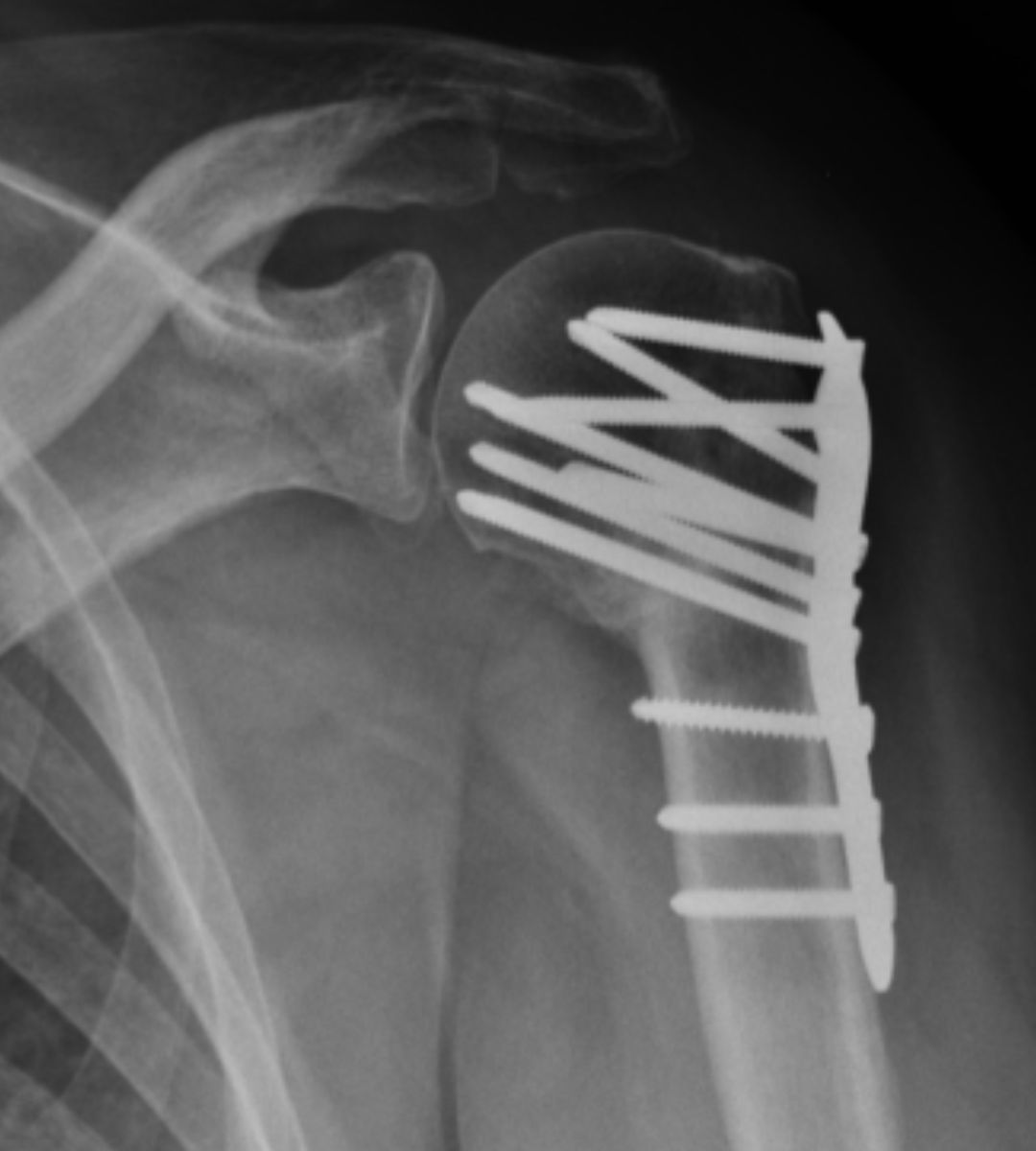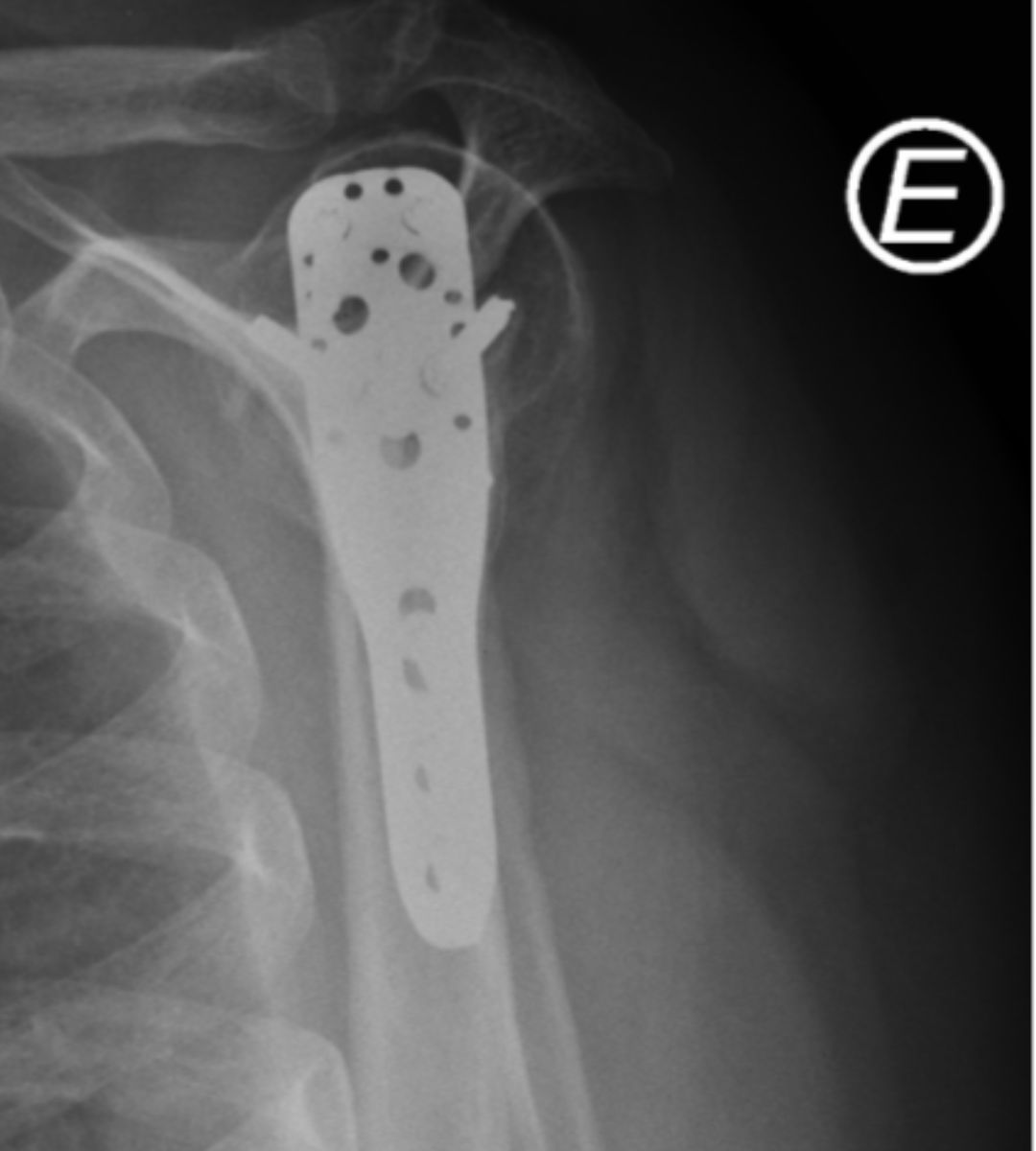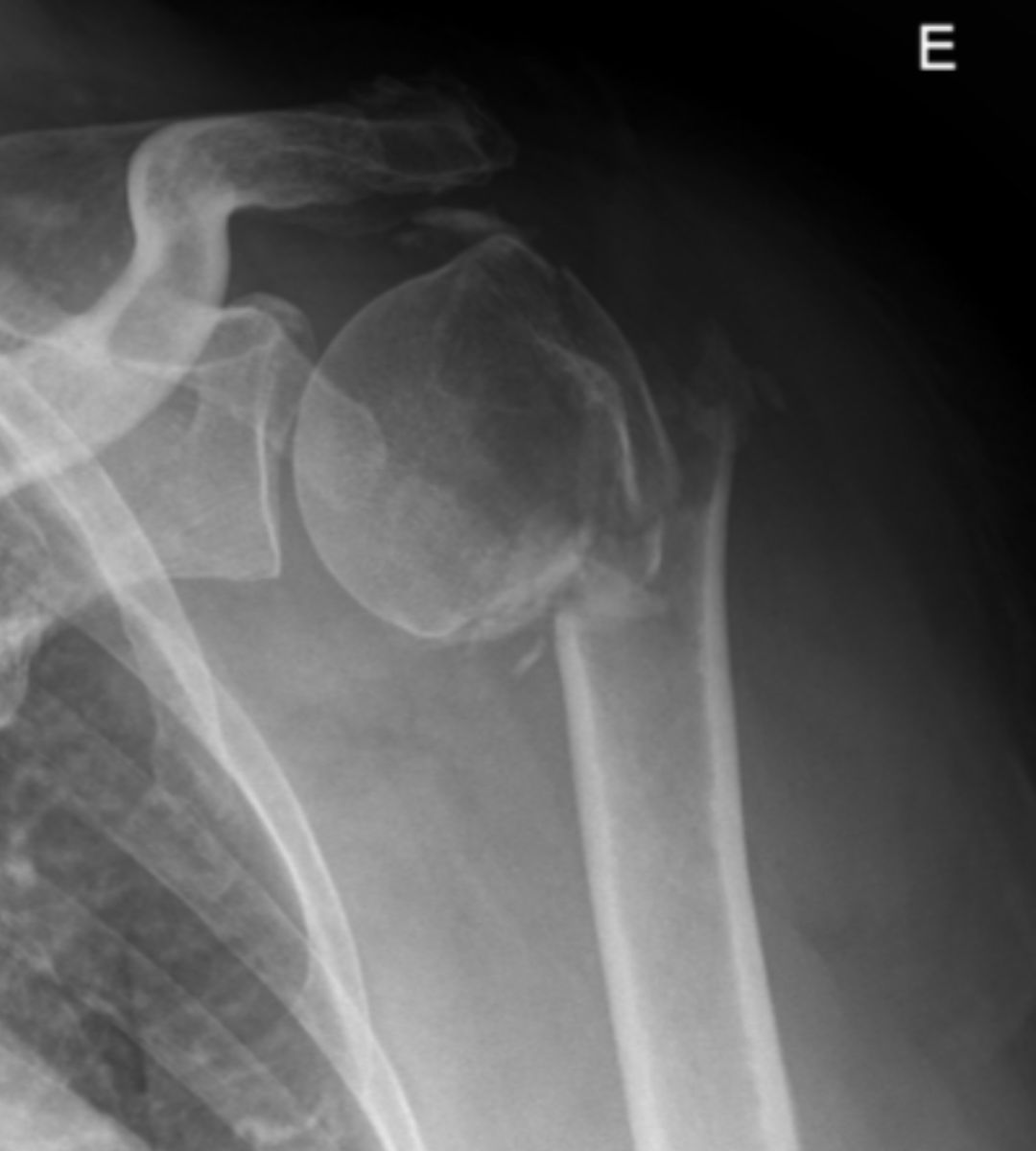Shoulder Fracture (Proximal Humerus)
What is a Shoulder Fracture (Proximal Humerus)?
What is a Shoulder Fracture (Proximal Humerus)?
The humerus is the bone of the arm and is anatomically divided into the proximal humerus (upper region), the distal humerus (lower region) and the humeral shaft (intermediate region). The proximal humerus is the region of the humerus that articulates with the glenoid of the shoulder blade and with it forms the shoulder joint.











Epidemiology
It is a common fracture, being the 3rd most frequent fracture in the elderly. It is predominantly found in women.
Mechanism of injury
Mechanism of injury
It varies according to age, being associated with falls from standing height with trauma to the shoulder or elbow in older patients and high-energy accidents in younger patients.
Signs and Symptoms of Shoulder Fracture (Proximal Humerus)
Signs and Symptoms of Shoulder Fracture (Proximal Humerus)
Pain and inability to move the shoulder. Pain improves when the affected side is supported by the contralateral side
Diagnosis of Shoulder Fracture (Proximal Humerus)
Diagnosis of Shoulder Fracture (Proximal Humerus)
Physical examination
Physical examination
Pain on palpation of the shoulder and inability to perform passive mobility due to pain.
X-ray
X-ray
Geralmente suficiente para realizar o diagnóstico de fratura.
Computerized Tomography (CT)
Used to characterize the fracture and decide on treatment.
Shoulder Fracture Treatment (Proximal Humerus)
Shoulder Fracture Treatment (Proximal Humerus)
Shoulder Fracture Treatment (Proximal Humerus)
Decision
It is based on aspects inherent to the fracture and the patient.
Conservative
Conservative
When to perform? Fractures with little anatomical deviation.
Treatment options?
Treatment options?
Immobilization for approximately 3 weeks with a brachial suspensory followed by a rehabilitation period that may be extended for several months. Prognosis – Generally good with progressive recovery of mobility and strength. Patients who smoke are more likely to progress to nonunion.
Surgical
- When to perform? Significant displacement of the fragments involved in the fracture
- Procedure/technique:
Osteosynthesis with plate and screws – Most commonly used technique to restore the anatomy of the proximal humerus.
Osteosynthesis with a nail – Technique used mainly in fractures of the neck of the humerus when only 2 fragments are involved.
Shoulder prostheses – When the humerus fracture cannot be reduced with either a plate or a nail because there are multiple displaced fragments or in the case where there is a low probability of consolidation.
Postoperative
- Patients can be discharged on the same day or the day after surgery.
- They must wear a brachial brace for a period of between 2 and 4 weeks.
- The stitches are removed after 2 weeks.
- You can start passive mobility exercises the day after surgery
When to seek an Orthopedic Specialist?
When to seek an Orthopedic Specialist?
Whenever you have a fracture of the proximal humerus.